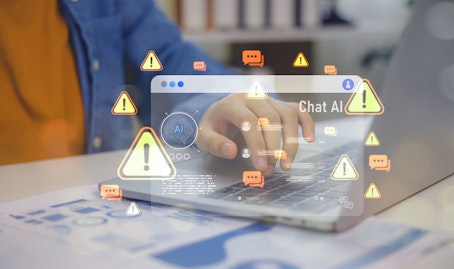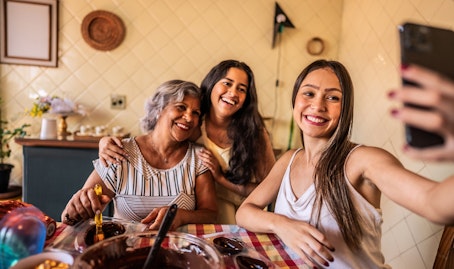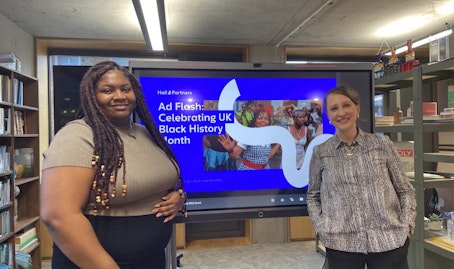Perspectives

Imagine for a moment that the toxic, misogynistic corner of the internet – the manosphere - was running your kid’s school. Now, pause and consider that it already is; not physically, but through their screens. Digital misogyny is on the rise and this means that, through social media content, influencers and extremist groups, it is being consumed by children. This dangerous trend is regressing the progress we’ve fought so hard for in terms of gender equality. It's not just influencing how young boys perceive girls and women; it's actively undoing years of social progress and sending us backward in ways we didn’t anticipate.
If you haven’t yet heard about the dangers of the manosphere you will soon, following the furore around the new Netflix drama series, Adolescence. The rise of radicalised ideas, especially among young boys is exposed by this series and it is truly worrying; particularly to see how it is reshaping how boys see gender, relationships, and respect for others. These aren’t just abstract issues happening somewhere out there; they’re real, and they’re shaping the future in dangerous ways.
The youth crisis we can’t ignore
Watching Adolescence, a drama of about a 13 year old schoolboy accused of a brutal murder, hit me harder than I expected. It highlights just how much of an impact online spaces are having on young people’s mental health as well as their perceptions of the world and each other. As Sir Keir Starmer said after watching the series with his children: “It has captured something deeper in our national understanding and shone a light on a problem all too often swept under the carpet”.
In schools, misogyny is becoming deeply ingrained. A report from Ofsted found that sexual harassment and abuse are so common in UK schools that many girls simply “do not see the point in reporting it.” Instead, they learn to endure it. The Ofsted Review of Sexual Abuse in Schools (2021).
Research shared by Stylist magazine from Girlguiding UK underscores just how bad things are for young girls. The percentage of girls who feel "unsafe" because of sexism has more than doubled over the past decade to a staggering 47%. These findings are more than just statistics, they’re a stark reminder that the harmful narratives kids are exposed to online are having real-world consequences.
But the dangers are not exclusive to young girls. Toxic masculinity is warping the way boys see women too. From the online forums they are frequent to the influencers they follow, young boys are being exposed to views that misogyny, disrespect, and entitlement are normal.
The manosphere’s impact on young minds
It is extending beyond online spaces and affecting real-world behaviour. Mothers claim more and more that they are finding their boys increasingly difficult to recognise. They’re absorbing messages that dehumanise women and promote violence and control. For girls, the online harassment they experience isn’t just virtual, it spills into their everyday lives, creating an environment where girls feel increasingly unsafe.
And let’s not forget that the violence fuelled by these radicalised ideas isn’t just limited to digital spaces. It’s spilling out into the real world, from school shootings to gender-based violence. In a recent report from the UK’s National Police Chiefs’ Council and the College of Policing, there has been a 37% increase in recorded violence against women and girls - VAWG- related crimes from 2018/19 to 2022/23, which made up about 20 percent of all reported crime in England and Wales from 2022 to 2023. It is also estimated that at least one in every 12 women will be a victim of VAWG every year (that’s two million victims!). These are cautious/ tip of the iceberg estimates as well, since it is well-known that many of these incidents go unreported. This is no longer just something happening “out there.” It’s a growing societal problem, and it is poisoning the perceptions of gender, relationships, and power that young people hold.
The illusion of parental controls
It’s easy to assume that the answer is for tech companies to create solutions to the problem with parental controls. But the reality is far more complex. These tools aren’t working. Seven in 10 children aged between nine and 13 years (71%) say they have been exposed to harmful experiences or content online. Further, eight in 10 parents feel completely overwhelmed when it comes to keeping their children safe online, according to recent research from Internet Matters. The false sense of security technology companies provide only distracts us from addressing the larger issue, the unchecked power of platforms that allow harmful content to thrive. As a result, we are failing to shield kids from the most damaging content.
Meanwhile, we continue to argue over how much control we should have as parents without acknowledging the bigger, more dangerous issue: that social media is actively regressing the progress we’ve made toward gender equality. These platforms are amplifying toxic masculinity and misogyny, while undermining the healthy, respectful attitudes that children should be learning.
It's important to recognise that addressing toxic masculinity should not lead to toxic femininity. Boys should not be made to lose for girls to win, as doing so only perpetuates the very issues we're trying to overcome.
Brands: The role they play in shaping the future
So, what can be done? In an increasingly fragmented political world, the responsibility can't fall solely on parents, educators and technology firms. Brands, the influential entities that shape the cultural landscape, must step into the role to reverse these trends and promote healthier, more inclusive narratives. The power of advertising, media, and even the products we consume can influence young people in ways we may not always recognise.
Five things brands could think about now:
1. Champion positive role models: Brands can prioritise showcasing positive role models who promote respect, equality, and kindness. By highlighting diverse voices and representing both women and men in empowering, non-stereotypical ways, they can shift perceptions and encourage healthier behaviours. The impressive and inspirational ultra marathon run by Radio 1 presenter Jamie Laing demonstrated the ‘cool’ in showing your vulnerability and the power of being open. This is the positive “alpha” energy we are looking for. Ensuring marketing campaigns reflect a commitment to gender equality, avoiding harmful portrayals of women and men that feed into dated, toxic gender norms.
2. Address misogyny in advertising and content: Brands have the power to set the tone for what is an acceptable behaviour/imagery in mainstream and social media. By taking a strong stand against misogyny and any form of toxic masculinity, brands can actively distance themselves from harmful content and populate what children are exposed to with more positive images. Positively, Spotify has recently taken down podcasts by the self-proclaimed misogynist who became a popular internet influencer, Andrew Tate. New social platforms such as Blue Sky are emerging as an alternative to X, offering users more control over their experience and content because it is built on an open-source framework, not toxic algorithms. Companies need to be intentional about the platforms they use and the messages they send, ensuring that the content they produce, or support doesn’t perpetuate dangerous stereotypes or normalise harmful behaviour.
3. Promote digital literacy and mental health resources: Brands, especially those that operate in the digital space, can do more to both support and launch digital literacy initiatives such as educating teachers, parents and children about the dangers of online radicalisation, misinformation, and toxic masculinity. Brands can help equip young people with tools like the Google and ParentZone 'Be Internet Legends' programme, designed to teach children aged 7-11 years about online safety and the importance of critically assessing online content. They have a full curriculum with lesson plans and internet safety and cyberbullying workshops; all designed to support educators in introducing digital wellbeing to children. Additionally, supporting mental health awareness and providing resources can be a game-changer in helping kids process the stress and pressure of growing up in the digital age.
4. Encourage positive conversations around gender equality: Campaigns and platforms that encourage open and positive discussions about gender equality, consent, and respect can be shared. By facilitating conversations that challenge outdated ideas and encourage empathy and understanding, brands can help reshape the narrative around gender roles and relationships for a new generation.
5. Support the right stories: Entertainment shapes culture. Shows and content that promote equality, respect, and kindness matter more than ever. Brands can use their platforms and advertising spend to champion and promote content that uplifts and educates – just like Adolescence – rather than promoting the sensationalised, harmful narratives that currently dominate many online spaces.
Focusing on a gender-equal future for our children
As we face a future where gender equality feels more fragile than before, the role brands can play in shifting the conversation cannot be overstated. Brands are not just selling products; they are shaping culture. They have the power, and arguably the responsibility, to help reverse the damage being caused by the manosphere and the rise of toxic masculinity. By championing positive role models, addressing harmful stereotypes, and fostering open conversations around gender equality, brands can be a force for good in the fight for a more equal and respectful society.
However, brands alone are not the solution. It is a collaboration between tech companies, brands, and governments that will truly make a difference. Stronger regulations and legislation from governments can empower and support brands in their efforts to help shift societal norms. This collaboration will pave the way for not only brands but also society as a whole to reverse the damage being done. It is a collective effort, and it is on all of us to make a meaningful difference.
Now is the time for brands and companies to step up, not just for their business bottom lines, but for the future of our children and the world they will inherit. This is a call to action that brands must answer, in partnership with governments and the tech sector, if we are to reverse the dangerous trends that threaten to set us back.
Talk to our team of experts
Learn how we can deliver actionable insights and creativity to drive brand growth.








